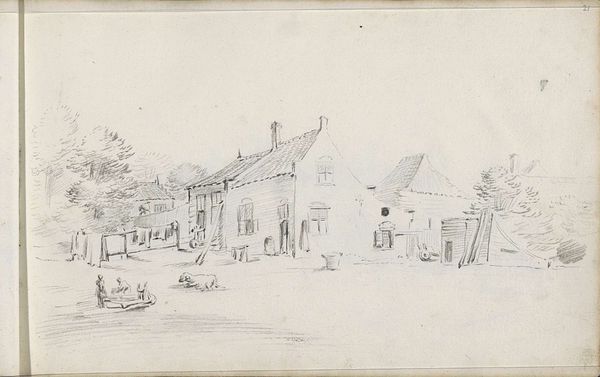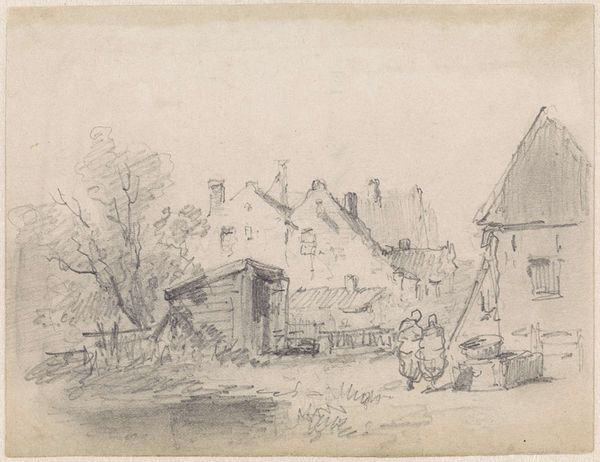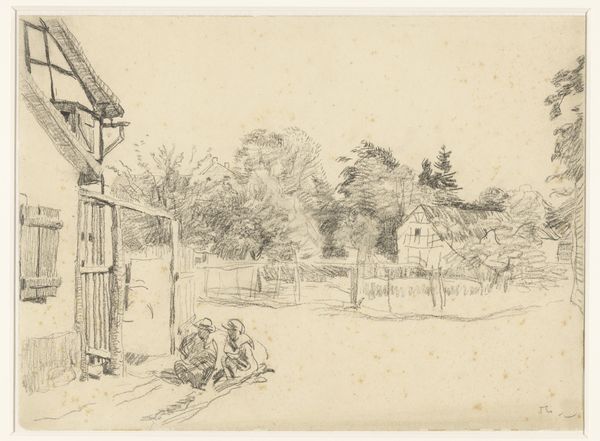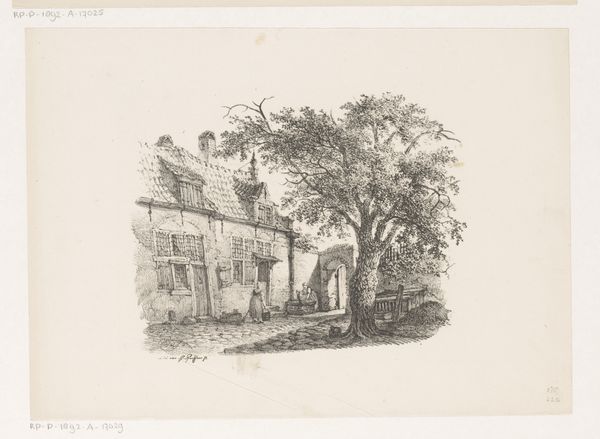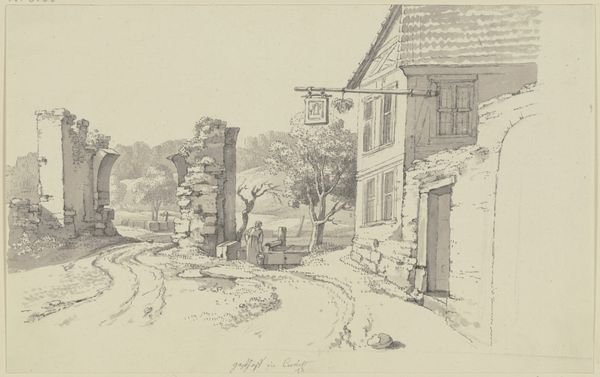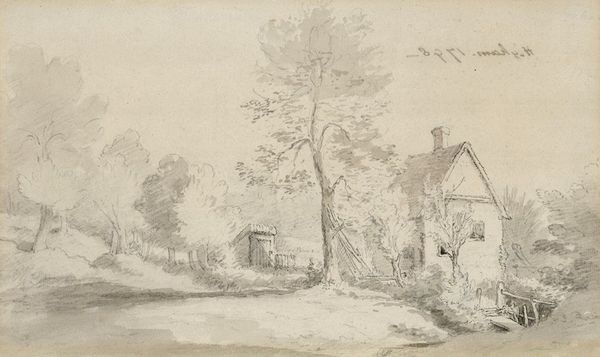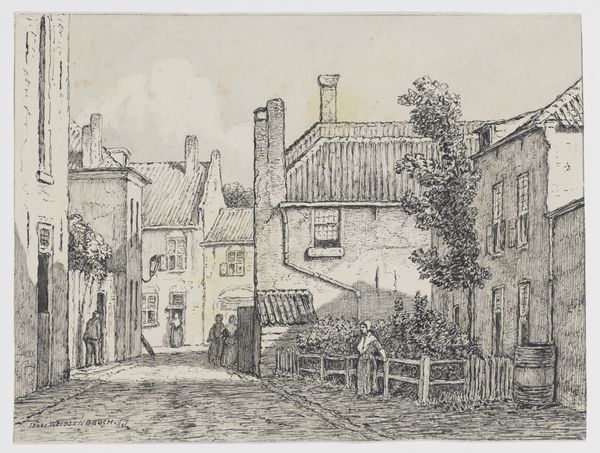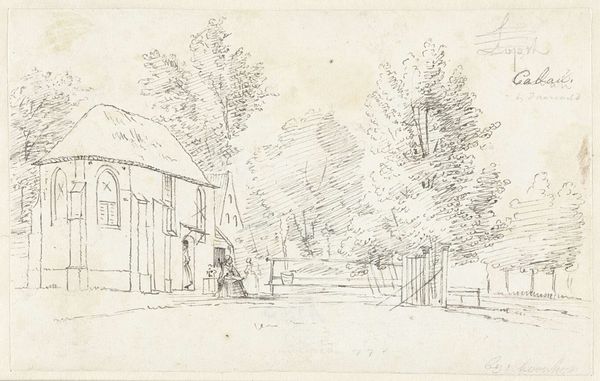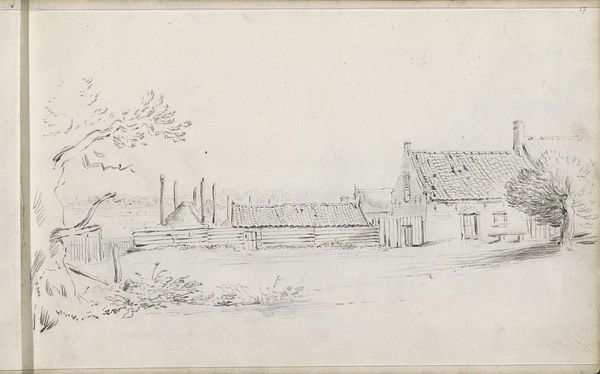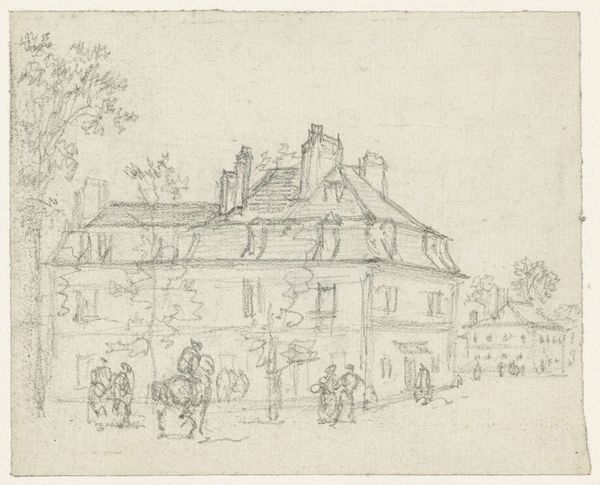
drawing, ink, pen
#
drawing
#
quirky sketch
#
dutch-golden-age
#
sketch book
#
landscape
#
personal sketchbook
#
ink
#
sketchwork
#
pen-ink sketch
#
pen work
#
sketchbook drawing
#
pen
#
genre-painting
#
storyboard and sketchbook work
#
sketchbook art
#
initial sketch
Dimensions: height 127 mm, width 203 mm
Copyright: Rijks Museum: Open Domain
Curator: Here we have Cornelis Pronk’s “Schiebroek,” a pen and ink drawing dating from sometime between 1720 and 1740. It’s currently held here at the Rijksmuseum. Editor: My first impression is one of airy lightness. The scene seems sparsely populated, the pen strokes delicate. There's a kind of calmness in the geometric ordering, but I’m also interested in how such a quiet scene might challenge preconceived notions of 18th-century Dutch life. Curator: Well, given Pronk’s position, let's dig into who might be in a position to be looking at such views. While ostensibly a simple landscape, remember that Pronk occupied a significant role in the Dutch East India Company. The work captures a specific geographic location in relation to the burgeoning wealth being extracted and accumulated during this period in the Netherlands. How might such a landscape play into colonial agendas? Editor: That's fascinating, considering the seemingly unadorned nature of the piece. Looking purely at its compositional elements, I’m struck by how the artist uses line weight to create depth. Notice how the buildings on the left are rendered with more confident strokes than the trees in the background, giving them an ethereal quality. I'm further intrigued by the placement of the buildings themselves and how Pronk manages to flatten and emphasize space—it feels slightly distorted but ordered. Curator: Precisely! This selective use of line, combined with his position within a larger colonial framework, underscores the idea of what’s rendered as central to life versus the obscured "periphery". It can even reflect Dutch society’s perceptions of different social groups. Who inhabits those buildings and who is afforded the privilege of leisurely observing? Editor: Your reading introduces fascinating levels of interpretation. Now when I look at the carriage, it suggests wealth but also a certain detachment, a viewing from a removed, mobile perspective. Curator: Exactly! So next time you think of a seemingly bucolic landscape, ask yourself who has access to that pastoral ideal and what sociopolitical undercurrents lie beneath its serene facade. Editor: And I think that's a call for us to always carefully parse the lines, compositions, and techniques in art, for it always reveals so much more than what’s immediately apparent.
Comments
No comments
Be the first to comment and join the conversation on the ultimate creative platform.
